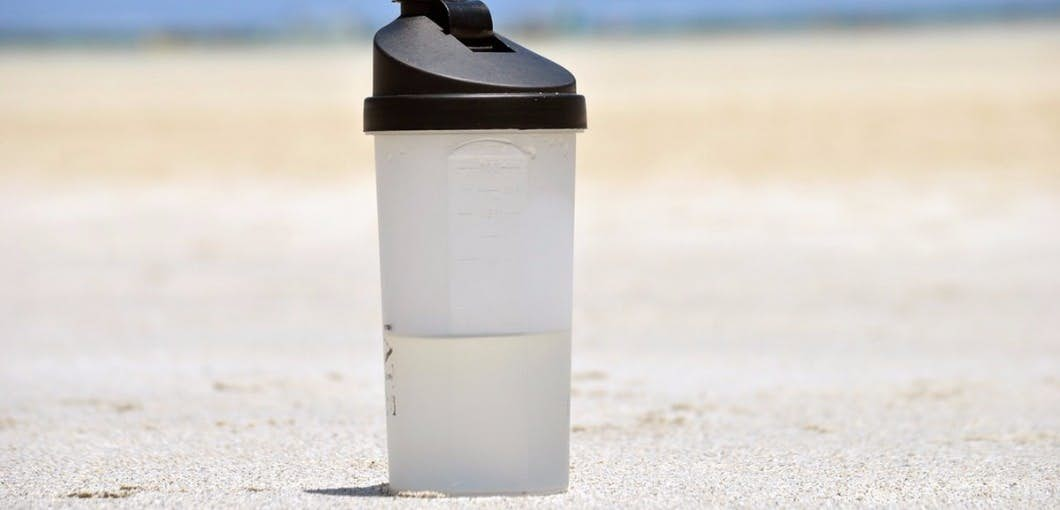
You’ve no doubt seen sport water bottles and other plastic containers with stickers claiming they’re "BPA-free." While that sounds good, what does it actually mean? And have you ever wondered what chemicals they’re using instead?
It turns out the substitutes for BPA that manufactures were so quick to use may be just as bad, or worse, than the original offenders.
Read on to discover what might be lurking in your food containers, and how you can avoid the damage they do to your body. (And if you don’t know what BPA is, you really need to read this. . .)
Continued below. . .
Introducing America's |
What is BPA?
Bisphenol A (BPA) is a chemical used in dozens of consumer products. Since the 1960s, BPA has been used in polycarbonate plastic food packaging and containers, including water bottles, baby bottles (until recently) and sip cups…
It’s used in epoxy resins that coat the inside of food and drink cans. It’s found in the thermal paper used for printing credit card receipts…
And it leaches from all these places into our bodies, causing a variety of problems.
Disrupts your hormones
The problem is that BPA is an endocrine disruptor. Hormone-producing glands such as your thyroid, pituitary gland, adrenals and pancreas, as well as the ovaries and testes, make up the endocrine system.
Endocrine disrupting chemicals (EDCs) can interfere with hormone production. This adversely affects development, reproduction, and the immune system, and causes neurological problems such as ADHD.1
EDCs can also contribute to the development of various kinds of cancer.
In 2008 the National Toxicology Program of the National Institute of Health determined BPA "may pose risks to human development, raising concerns for early puberty, prostate effects, breast cancer, and behavioral impacts from early-life exposures. Pregnant women, infants and young children are most vulnerable to the harmful effects of BPA…"2
How xenoestrogens harm your health
BPA is a specific kind of EDC known as a xenoestrogen, literally meaning "false estrogen." These EDCs mimic estrogen in the human body, displacing natural estrogen and binding to estrogen receptors. This interferes with normal biological processes.
Some researchers believe chronic low-level exposure to xenoestrogens, which nearly all of us get on a daily basis, can lead to reproductive problems in women and trigger early puberty in girls.3 These "false estrogens" can also increase the risk of developing breast cancer.4
The FDA insists the BPA levels currently found in foods are safe, but the public outcry to remove BPA from consumer goods led manufacturers to use alternatives. Unfortunately, companies were quick to slap a "BPA-free" label on their products without knowing if their substitutes were any safer.
New research shows that many of the BPA alternatives are just as problematic as the original.
"BPA-free" doesn’t mean it’s safer
A joint study between King’s College London and the U.S. Environmental Protection Agency compared the estrogenic activity of BPA to six bisphenol analogues, other forms of bisphenol used as BPA substitutes, in three human breast cancer cell lines.
The bisphenol analogues they studied were:
- Bisphenol AF (BPAF)
- Bisphenol B (BPB)
- Bisphenol Z (BPZ)
- Bisphenol F (BPF)
- Bisphenol AP (BPAP)
- Bisphenol S (BPS)
The researchers discovered that ALL bisphenol analogues exhibited activity similar to estrogens, promoting cell growth in estrogen receptor-mediated cell proliferation.
While this may not be entirely surprising, the shocking thing was that three of the alternatives, BPAF, BPB and BPZ, were even more aggressively estrogenic than BPA itself.5
Xenoestrogens can also cause problems for men
Women aren’t the only ones who need to beware. BPAF may lower testosterone levels in men by directly inhibiting its production in the testicles.6
For a variety of reasons, reduced testosterone is unhealthy. Here’s just one: In a study published in the March 2010 issue of Clinical Urology, researchers discovered a link between low serum testosterone levels and aggressive prostate cancer, compared to men with high testosterone levels.7
BPS was once thought to be a safe alternative…
Bisphenol S (BPS) is now found in many plastics because it was once thought to be a safe alternative to BPA. Even though it’s not as strongly estrogenic as BPA, it carries its own set of problems.
A study performed at the University of Texas Medical Branch Galveston discovered that BPS disrupts cell signaling in pituitary glands, leading to altered cell proliferation, cell death and prolactin (PRL) release.8
Prolactin is a hormone secreted by the pituitary gland associated with milk production. It also helps to regulate metabolism, the immune system and the pancreas.
A study published in the Journal of the National Cancer Institute found that postmenopausal women with high levels of prolactin had an increased risk of developing breast cancer.9
How to decrease your risk of exposure
to bisphenol chemicals
Because these chemicals are ubiquitous, it’s difficult to get away from them completely. It’s estimated that 93% of Americans carry BPA in their bodies.10 However, you can take steps to reduce your risk of exposure, such as. . .
- Avoid drinking out of plastic water bottles, even if they claim to be "BPA-free." Use glass or stainless steel reusable bottles.
- Choose fresh or frozen food over canned food.
- Use dried beans instead of canned beans.
- Store food and beverages in glass containers instead of plastic.
- NEVER heat food in plastic dishes in the microwave. The chemicals have been known to leach into food from heated plastics.
- Opt for electronic receipts. Refuse the offer of receipts you don’t need.
- When choosing plastic toys, look for "non-toxic" on the label and don’t be afraid to call the manufacturer to inquire. Consider choosing non-toxic wooden toys.
Taking steps to reduce your exposure—and that of your family—to these harmful chemicals can decrease the chances of developing a number of health problems.


